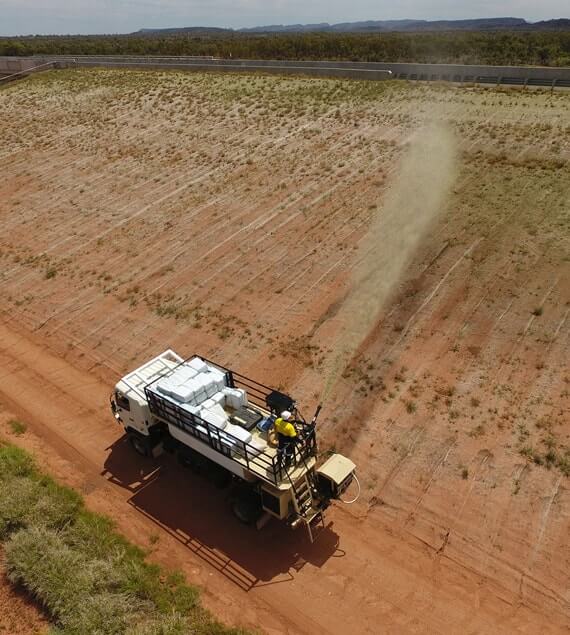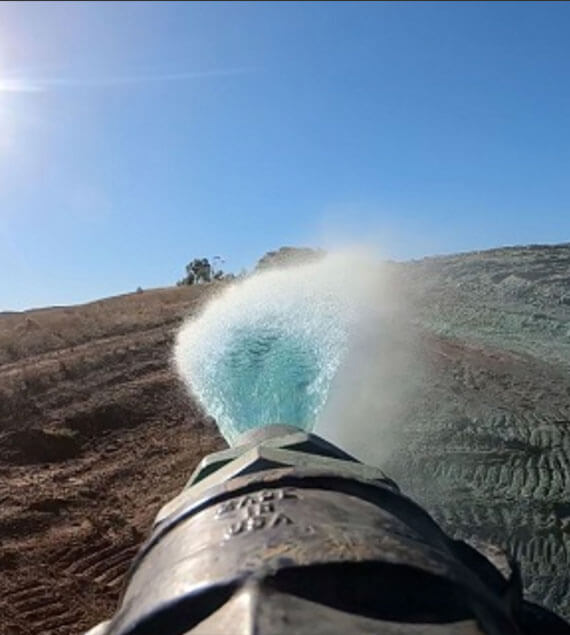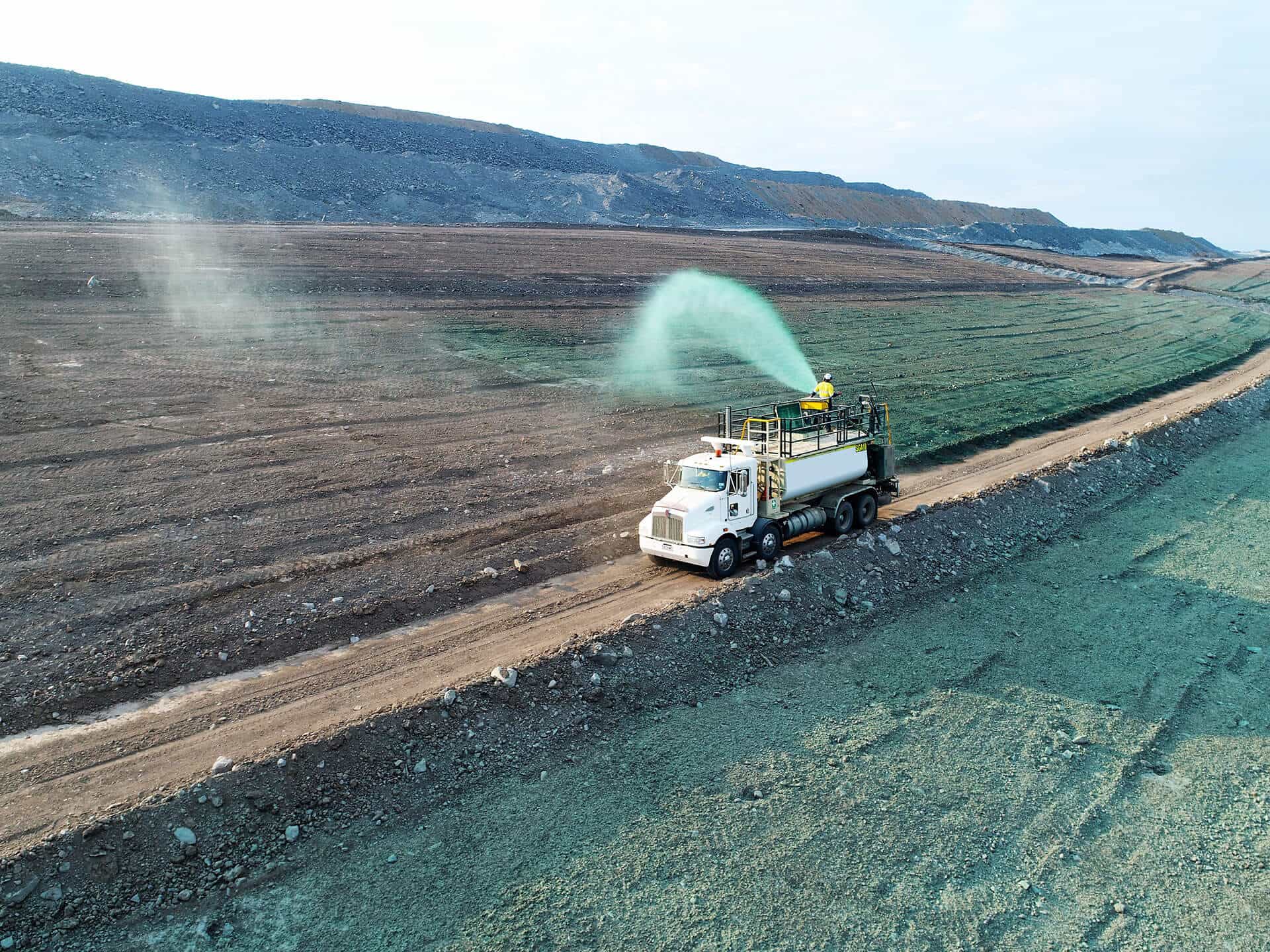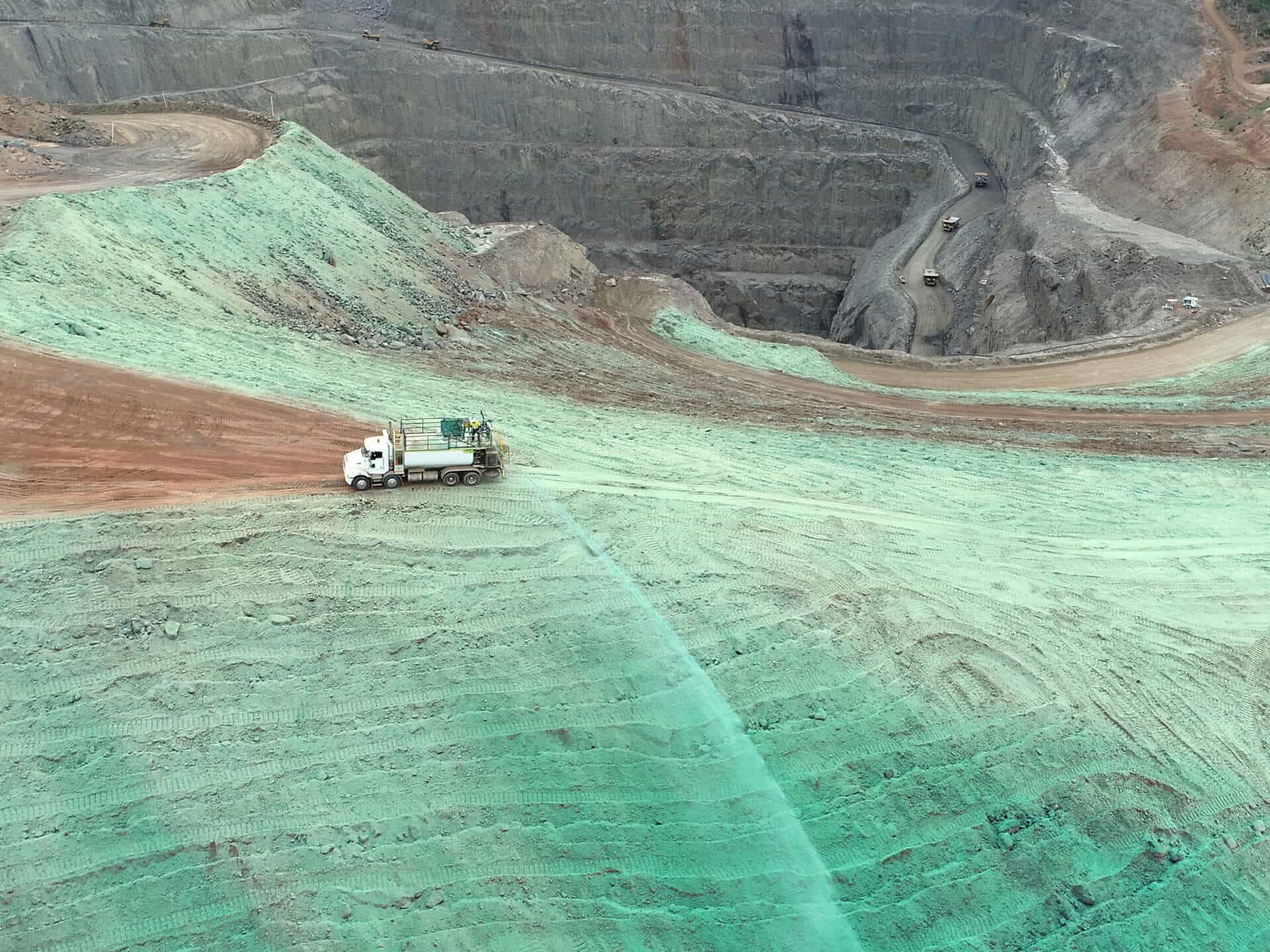We Assist Revegetation Initiatives In Various Sectors

Our Mission
To provide Australian industries with solutions and services that benefit the environment as much as it does the client.
Our History
We have spent many years servicing Australian industries and sourcing the best products and solutions.
Our People
Our highly-trained and experienced revegetation professionals continuously undergo training to ensure our clients are receiving the best service.
Revegetation Contractors For Large Scale Regrowth and Dust Suppression
We understand the value of mine rehabilitation as part of the best practices of socially responsible miners in this modern era.
Thus, various organisations from the mining sector have already tapped into our revegetation services. We facilitate the initial survey, soil testing, remediation planning, and damage assessment in mining sites across the country.
Local miners may initiate a revegetation project on their own. Still, with poor implementation and without proper guidance, they may skip a few essential steps to a successful soil rehabilitation project.
For instance, many mining sites pose challenges to soil rehabilitation because of their typical barrenness — with only the bare bedrock left. The majority of mines, however, still have topsoil present. This rich part of the soil needs to be salvaged, managed and reapplied correctly. The bioactive components left in the ground can still be used to hasten the process of remediating the mined area.
With proper damage assessment, a mining site may be rehabilitated without wasting the resources that are still present in the area.
In other cases, a mining site may first require the decompaction of all compacted areas before it can be seeded successfully. Processing areas, network roads, and equipment storage areas all need to be ripped up to a depth of 3 feet to optimise germination, root penetration, and water and nutrient uptake.
By skipping decompaction and other essential pre-planting practices, local rehabilitation initiatives may fail in fully repairing and reviving mined lands. Our team of experts ensure that each revegetation project we handle will address the peculiar conditions for every land area we work on, mined sites in particular.
We religiously use tailored revegetation methods that are based on the latest soil restoration research, cooperating with local miners and environmental scientists alike.
Different regions in Australia experience different climate conditions, thus posing the need for a tailored revegetation approach for each local area.
Our specialists understand that one key element to a successful revegetation project is the initial assessment of the environmental conditions surrounding the target site.
By having a comprehensive understanding of the soil characteristics, the amount of rainfall, the history of land use, the existing microorganisms, if any, and the nearby habitats and settlements in the area, we can offer the best and most suitable approach for revegetating a site.
We also aid in reducing the risks of fatalities in certain communities where a nearby site has significant soil erosion. The impending danger of landslides in areas surrounded by mountainous but deforested regions is a serious challenge to any local government.
Using our research-based revegetation techniques, we can hasten the process of soil rehabilitation and eliminate such risks. We work with local governing bodies across the country to ensure the remediation of vast lands, especially those considered as public property.
Our state government officials are aware of the soil degradation that results from human activities in many of our public lands. Even Australian rivers and waterways suffer from the deterioration, with foreshores getting eroded continuously.
Furthermore, we are dealing with bushfires on an annual basis. Such fires typically decrease the total nutrient pool in an area, although low-intensity fires may increase soil fertility through the chemical conversion of nutrients from dead plant tissues.
All these environmental calamities affect the nutrient dynamics of the soil. Without proper soil testing and assessment, a remediation project may not be able to properly rehabilitate an area in the shortest possible time.
Thus, we offer our streamlined process of revegetation to the concerned departments under our state government.
Our dedicated personnel and large-scale revegetation equipment provide rapid and practical solutions to soil rehabilitation, thereby aiding public service efforts of saving our natural habitats and keeping communities safe from the dangers of erosion.
The relationship between the military forces and the environment is typically one of destruction, instead of protection. Modern efforts, however, have been initiated by the Australian Defence Force (ADF) to promote sustainable land management.
We consider it an honour to work with the ADF in pursuing such a noble initiative. It is also our aim to promote the responsible use of the Defence estate, preserving significant areas of military-owned lands as wildlife sanctuaries.
We understand that intensive military training grounds have deforested thousands of hectares of land. Our revegetation services aid the Defence Department in rehabilitating military sites around Australia and promoting biodiversity as a result.
It is our hope that the Defence Force will continue to play a significant complementary role in managing and conserving our ecosystems. Our highly-skilled revegetation contractors are ready to work with the Defence Department in any rehabilitation project across the country.


Hydroseeding Contractors
Hydroseeding is the revegetation technique that spreads a mixture of water, seed, fertiliser and tracking dye on topsoil. It is one of the modern applications of hydraulics that we employ to make revegetation more efficient.
Hydroseeding Benefits
Among the many benefits of hydroseeding is eliminating the constraints of traditional seeding methods. This innovative process allows the seeding of areas that would otherwise be difficult to reach by manual or hand-operated procedures.
Our hydroseeding technique involves the use of a tracking dye, which helps us monitor the areas we have already covered. This method prevents both the wastage of resources and any plant overgrowth across any landscape. Our trained personnel also ensure that the solution is mixed evenly and applied uniformly using our advanced hydraulic equipment.
Moreover, we add a binder into the seeding mixture to prevent the components from being washed away by water. This method has specifically been proven helpful in keeping the seeds and the nutritive compounds from sliding down along steep batters.
When To Use
If you are looking to revegetate a considerable area where quality soil already subsists, you may consider hydroseeding. It is best for land areas where mulching is no longer needed and where quality irrigation already exists.
While hydroseeding does not offer erosion protection until after the vegetation has established itself in the soil, its long-term benefits far more outweigh the short-term constraints.
Overall, our hydroseeding technique can be a much more cost-effective way to regrow your land compared to other methods, such as direct seeding, drill seeding, and turf rolling.
Thus, it has become a fundamental part of our advanced revegetation procedure.
Would you like us to help you revegetate your land more efficiently?
Hydromulching Contractors
Hydromulching involves the spraying of a mixture of water, seed, fertiliser, cellulosic mulch fibres, tracking dye, and a binder on the soil. The resulting slurry is spread through an advanced hydroseeder.
You will notice that the addition of mulch is what sets hydromulching apart from hydroseeding.
The mulch fibres, which can be in the form of straw or wood fibres, act as the Hydraulic Growth Medium (HGM).
Hydromulching can be done either as a one-step process (Hydromulching HGM) or as a two-step application (Hydromulching BFM). The latter uses the same ingredients as the former but utilises a special non-rewetting binder and applies the solution at a much higher rate.
Hydromulching Benefits
Hydromulching provides a protective cover and a reservoir of moisture for the seeds. Thus, it already offers short-term protection against soil erosion while waiting for the seeds to grow.
The hydromulching technique also allows the seeds to germinate once it begins to rain, eliminating the need to water manually.
Moreover, our hydromulching process involves the use of microbiological soil amendments. These additional substances help in promoting soil health and in optimising germination.
All in all, hydromulching provides an efficient solution for dust suppression and soil erosion even before the vegetation has established itself. It also offers increased water and nutrient retention in the soil, thereby ensuring plant growth under optimum conditions.
When to Use
If you are looking to revegetate a vast, barren piece of land quickly, you may consider hydromulching. This unique revegetation technique works for all types of terrain — whether the area is plain flat, highly sloped, or a part of a verge.
To maximise the benefits of hydromulching, our revegetation specialists will first conduct a standard soil assessment before designing the right hydromulching approach for your land.
Would you like to take advantage of our specialised hydromulching process and revegetate your land with ease?


Want to learn more about our revegetation services? Reach out to us through the form below. We are happy to address your concerns.
Please note that we do not service residential properties.
